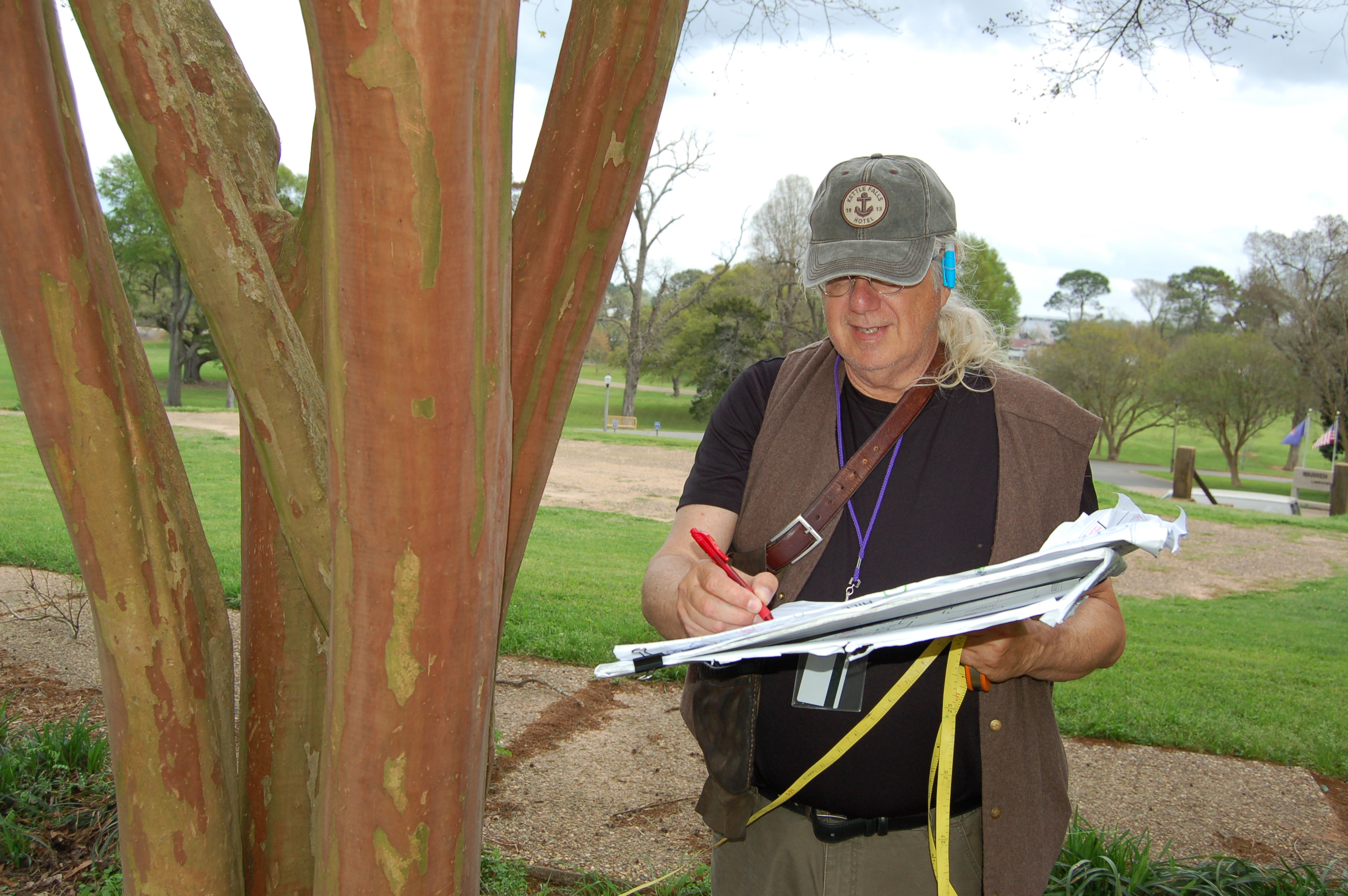NATCHITOCHES – Northwestern State University hosted a historic landscapes consultant earlier this year to move forward with an initiative to complete a campus tree survey.
David Driapsa is a Fellow of the American Society of Landscape Architects (ASLA), a past national chair of the ASLA Historic Preservation Professional Practice Network and past ASLA national chair/coordinator of the Historic American Landscapes Survey. Driapsa conducted a tree survey to create a digital map of trees on the NSU campus. The project will eventually tie into the Grits and Mary Ryan Gresham Bird Trail and serve as a guide for future tree plantings and replacements of heritage tree species.
“This mapping involves several related, sequential and coordinated tasks,” Driapsa explained. “The first task occurred prior to my arriving on campus, which involved updating in digital format an AutoCAD map of the 333 acres of campus lying within the project boundaries between University Parkway, Chaplin’s Lake, and Tarlton Drive.”
Driapsa carried the updated map into the field to record tree measurements and fields notes and further update the campus map during that course of his work.
“The campus map that I produced for this project actually is a set of 10 sheets of drawings at the scale of 50 feet to the inch,” he said. “I also produced an overall map of the entire project area at the scale of 200 feet to the inch. Dogwood Valley is another map that I have prepared, this at the large scale of 20 feet to the inch.”
The tree survey initiative began last fall when NSU’s Student Government Association received a grant from the Cane River National Heritage Area in partnership with the National Center for Preservation Technology and Training. The project will serve as a base map for the planning and routing of one or more campus tree and bird trails and serve as a guide for future tree plantings and replacements of heritage tree species.
On campus, Driapsa measured the diameter of tree trunks with a flexible tape measure that translates the tree circumference to tree diameter.
“Each day I measured trees on campus, then I transferred that field data collected into AutoCAD, building up my digital database of trees on the NSU campus,” Driapsa said. “I had given myself a month, but, with the rising global pandemic, I consistently worked through long days and the weekends to successfully complete my goal of data collection.”
With the fieldwork completed and the data entered into AutoCAD as a digital map, Driapsa’s final tasks are to create the presentation graphics phase that will complete the project.
“With these tasks now completed, I have turned to analysis and to producing the graphic arts to identify heritage trees, surviving trees planted by [NSU biology professors} H.J. Young and George Williamson in the first half of 20th century, trees planted by NSU professors between the 1950s to 1980s and all the existing trees on campus,” he said.
Tree planting on the NSU campus dates back to at least the early 1900s. Many large trees survive in the Normal Hill Historic District surrounding the site of the former Bullard mansion, where the school was established. At one time over 150 species of trees existed on the campus.
The early tree plantings by Young and Williamson pre-dated or coincided with plantings by the Federal New Deal Era Public Works Administration in the late 1930s to early 1940s. Dr. George Ware is credited with planting trees during the 1950s-1960s. Another planting of campus trees occurring during the 1970s-1980s is attributed to Robert Daspit.
“Dr. Ware arranged the first tree walk in 1966. Bob Despit arranged a tree walk used from the 1970s to the 1980s and the most recent tree walk was arranged in 2018 by Dick Stalling,” Driapsa said. “I am adding a separate layer in AutoCAD coded to show unique, heritage and interesting specimen trees that will be included in an updated tree walk. Accessibility will a priority, with alternative loops currently under study to render the entire tree walk accessible.”
NSU SGA President Jacob Ellis said the project will enhance the beauty and value of the campus for years to come.
“It will hopefully encourage students to get outside more and lead healthier lives,” Ellis said.

